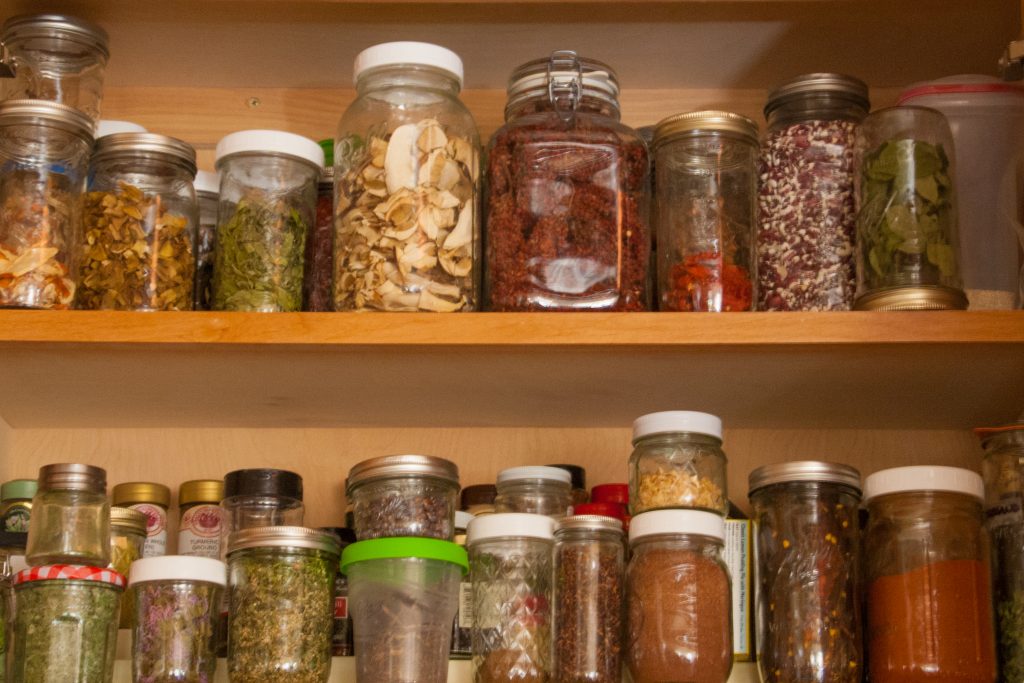
Drying is one of the easiest and least expensive ways to preserve your herbs, fruits, and mushrooms. Dried harvests are easy to store (no freezer space required!) and don’t heat up your kitchen in the middle of summer, like canning does. So if this has been a banner year for wild garlic or blueberries or porcini, why not fill your pantry with beautiful jars of dried, wild produce?

There are several different ways to dry your wild harvest. Let’s start with my favorite: the dehydrator. If you don’t have one, put it on your wish list! Mine has paid for itself many times over, and you can often find them on Craig’s List for a fraction of their original price.
If you live someplace humid, a dehydrator is essential for drying herbs, making fruit leather, and dehydrating fruit and mushrooms. Even in dry climates, a dehydrator is useful because of its compact size. Herbs are best dried at 95F or lower because volatile oils are preserved at lower temperatures and that’s where most of the flavor is. Look for a dehydrator with a thermostat so you can adjust the temperature to suit what you’re drying. A timer is also a nice bonus.

Of course you can dry food without a dehydrator. If you live someplace dry, try a double screen set up. Place your herbs (or fruit or nuts) on one screen, then cover with a second screen on top. The mesh allows air to circulate from above and below, and protects your harvest from pilfering birds and mammals. Several companies make screened, collapsible shelves you can hang in a breezy spot. Drying your harvest this way usually keeps the temperature below 95F (unless you live in Phoenix or Death Valley), and depending on the humidity where you live, it may take several days.
If you don’t have an equipment budget, you can always bundle and hang your harvest in a dry, dark place. But don’t be fooled by those pretty magazine photos of kitchens bedecked with colorful bundles of herbs. Once your harvests have dried, transfer them to sealed containers and store them a dark place to preserve color and flavor. Dried herbs left in a working kitchen will quickly become dusty and loose their flavor.

Oven and microwave drying are a last resort. Most traditional ovens can’t be set below 170F, which is too high for herbs and even higher than I’d recommend for fruits and mushrooms. But we make the best of what we’ve got, right? Prop open the door of your oven with a wooden spoon to lower the internal oven temperature.
Microwaves can be used to dry herbs, but not for fruit or mushrooms. As with a traditional oven, you’ll lose some flavor due to the high temperature. But at least you won’t be heating your house with an open oven. Place your herbs in a single layer on a dry paper towel, and microwave at full power for 30-second intervals, until the herbs are crisp. Replace the paper towel if it becomes wet, and be sure to let your herbs cool before you transfer them to a jar. Condensation may form during cool-down, which could lead to mold.
Have you got loads of morels, or bee balm for days? Dry your wild harvests now, and enjoy them for months to come.
Leave a Reply